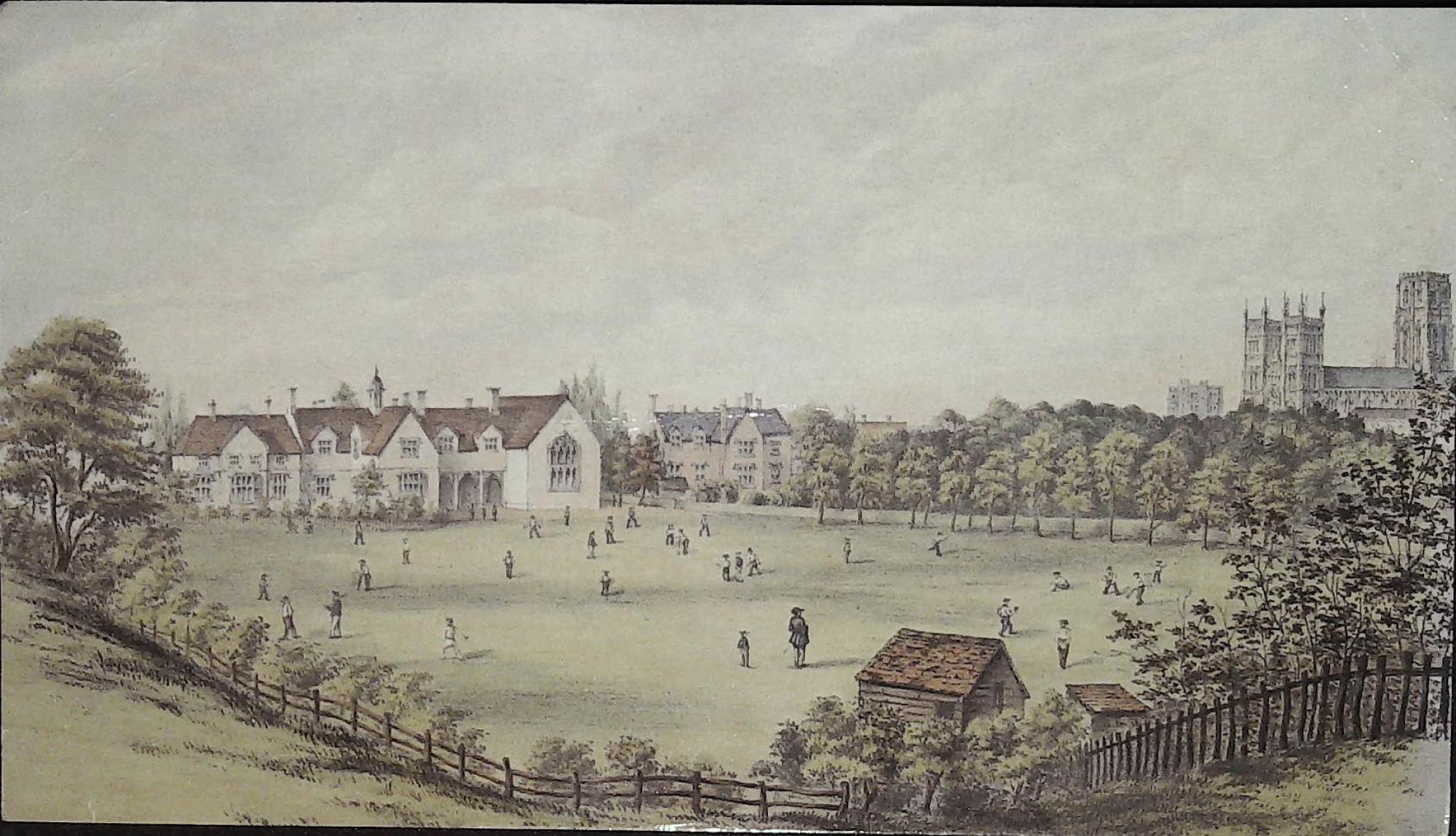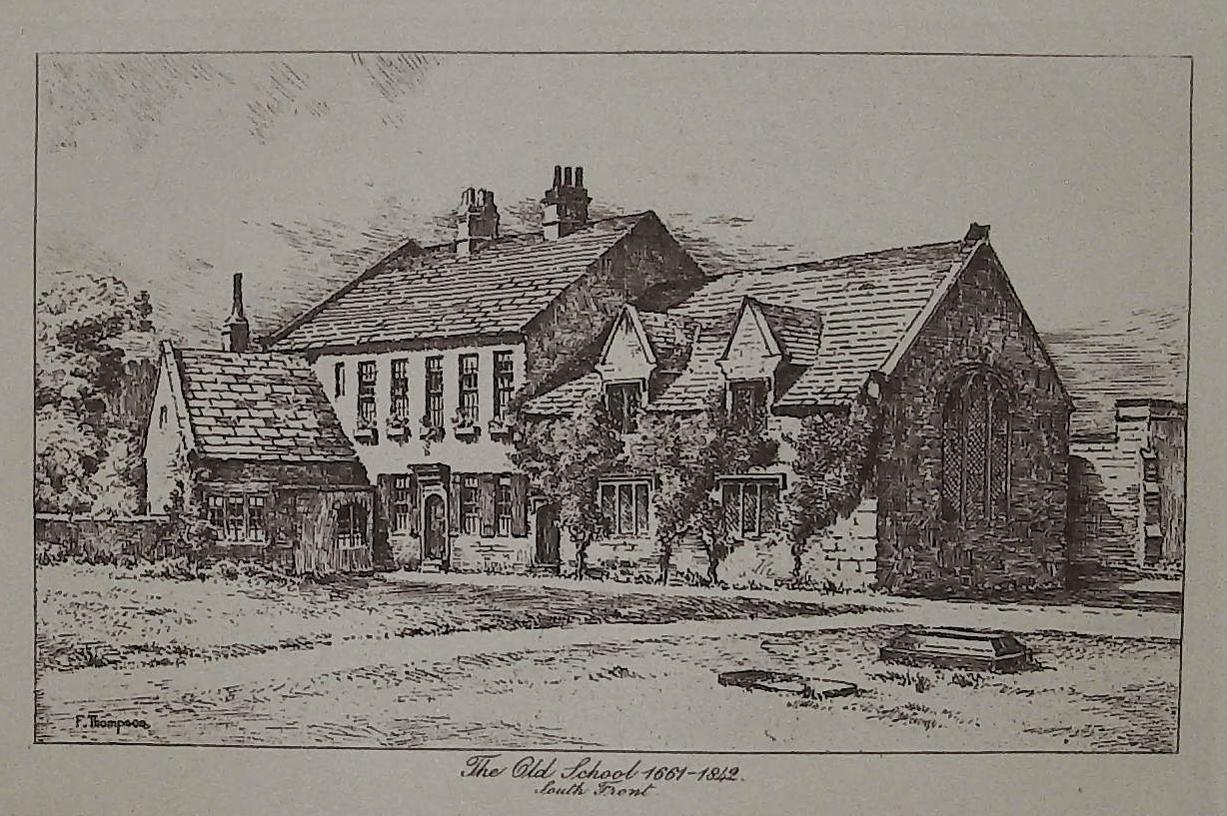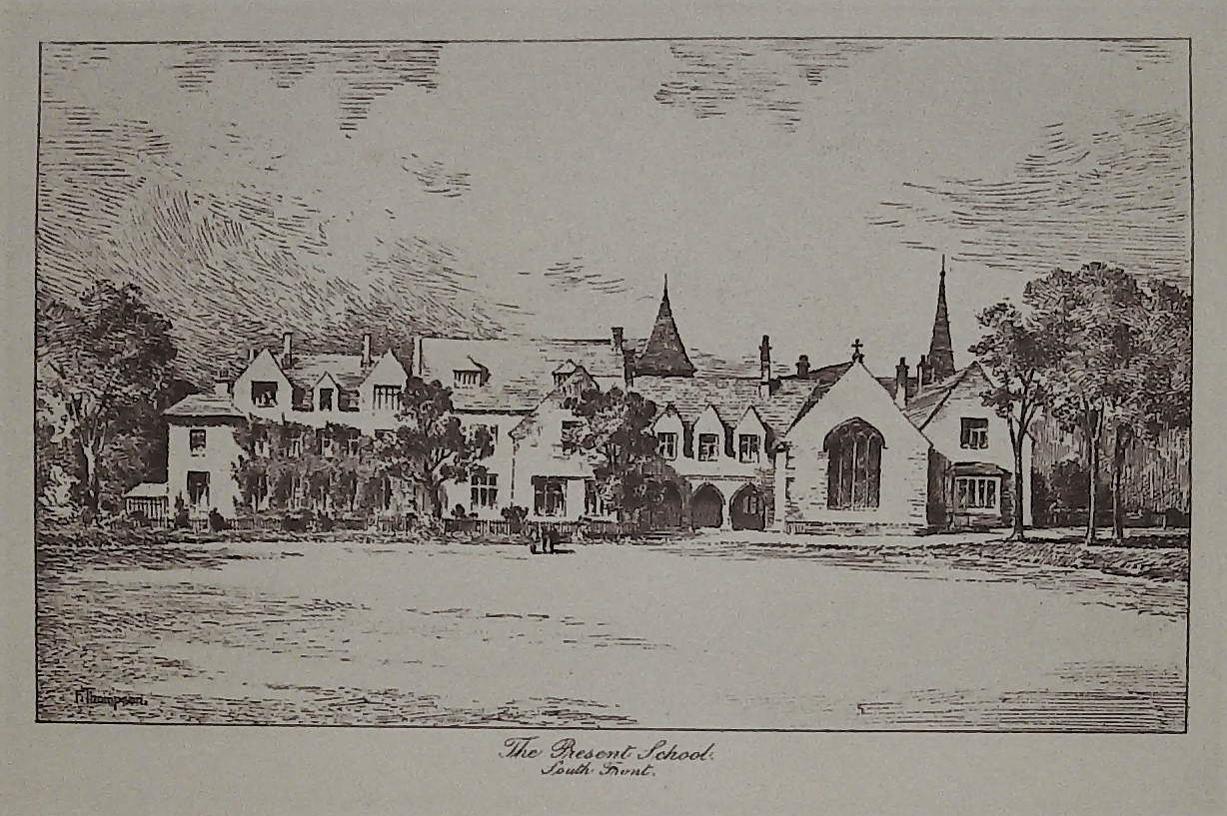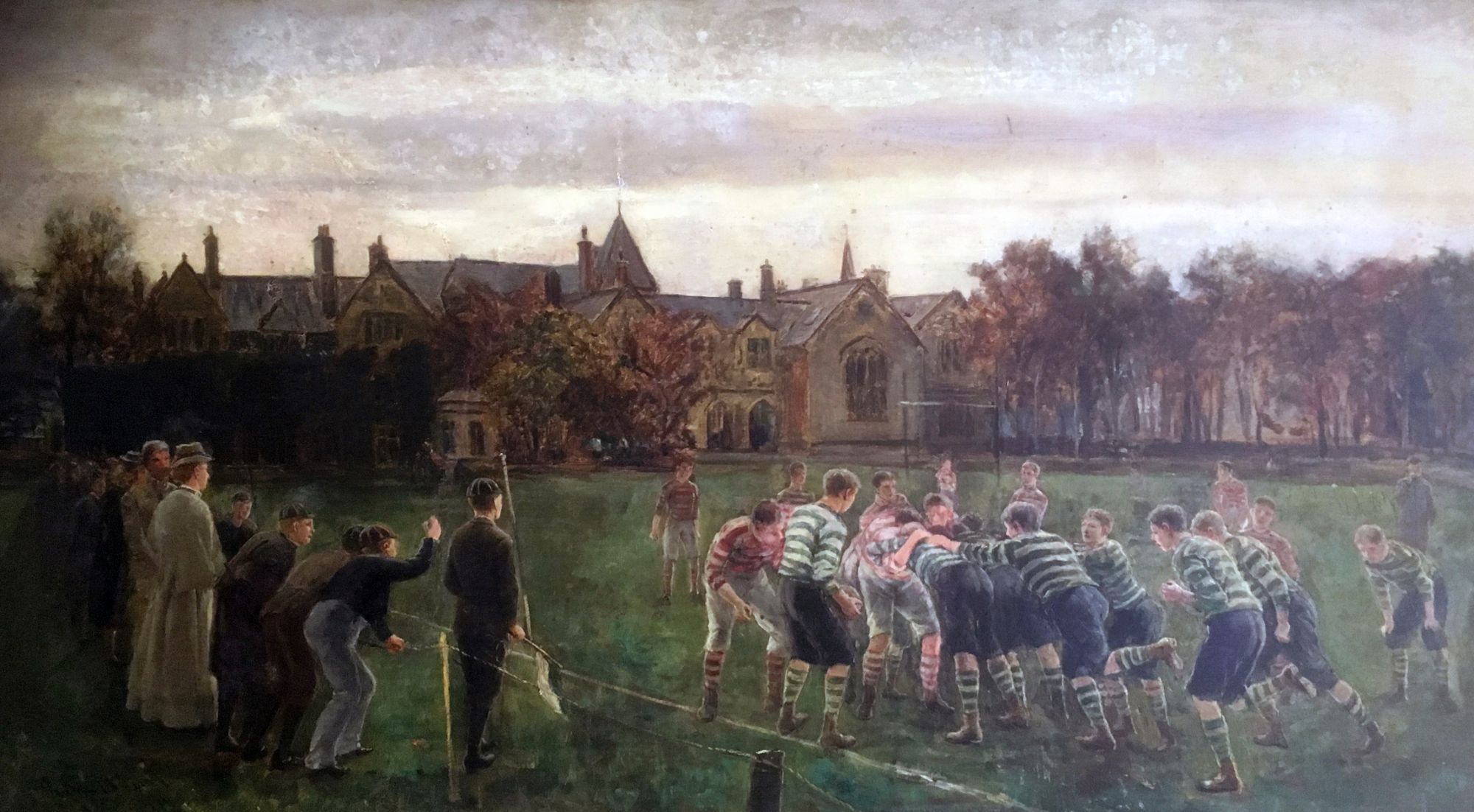|
There have been a number of paintings of Durham School over the years, as any visitor to the Headmaster's Office can attest. They indicate that while the school has grown and developed, much of the original buildings have gone unchanged, and they are still recognisable even after so much time. They also show how the views of Durham School have inspired artists for over a century.

The above painting is one of the oldest ones we have of the current site, although little is known about it. While the artist is anonymous, it is possible to determine the date based on the buildings. One of the buildings visible is the Second Master's House, which was constructed in 1847 and variously renamed as Old Caffinites and Ferens House before closing in 2001. However, the Exhibition Room is not visible, indicating that it was made before 1853. Thus we have a six year period in which it could have been painted. A game of cricket is being played in the Playground; a gentleman in a wide-brimmed hat and frock coat, possibly Headmaster Edward Elder himself, looks on in approval.

The first of these two illustrations show the Old School on Palace Green, active from 1661-1844. Those familiar with Durham University will recognise it as the current Music Rooms, which still have the tables engraved by generations of Durham School students hanging on the wall. The second shows the school on its present site, after it moved across the water in 1844. The 1853 extension of the Sixth Form Room and Master's Common Room, now the Exhibition Room and dining annexe, is also visible.

These were drawn by Frank Thompson A.R.C.A. (1852-1927), a talented artist who taught Drawing at Durham School from 1878 to his death in 1927. For a time he ran the Durham School of Art, established in 1853 by Professor James Finlay Weir Johnston; until it was subsumed into Johnston Technical School in 1901. From 1925, under the regime of the Reverend Michael Wilkinson, Frank Thompson also taught drawing at Bow School. In January 1927 he announced his retirement due to ill health; on the 3rd February, however, he passed away. Thompson had worked for the school for the period of forty-nine and a half years. "Although he was little known to most of the present members," wrote The Dunelmian upon his death, "Mr. Thompson was very popular with those that studied under him and imparted to them much of his own skill and artistic taste."

Possibly the most interesting painting in the Durham School collection, Thomas M.M. Hemy's A Rugby Match (1894) is one of the earliest known paintings to depict school sports. It was painted in 1894, and depicts the Durham School 1st XV mid-scrum with a team dressed in red and white rugby kit. The precise identity of this team is something of a mystery, as the rugby fixtures of 1894 do not mention anyone with those colours; those that did, such as Loretto School in Scotland, only played against the School in 1887. The painting was later released as a black and white print on 31 October 1896 by Messrs Mawson, Swan and Morgan, presumably engraved by printmaker Richard Paulussen.
The painter himself led an exceedingly interesting life. Thomas Marie Madawashka Hemy (1852-1937) was born on board a ship, the Marie Madawaska, off the coast of Brazil. His singular middle names come from the ship he was born in. He was educated in a school in Clayton Street, Newcastle, and soon began a lifetime love of the sea, joining a ship to the Mediterranean. An article in a January 1894 issue of The Boy's Own Paper continues his lifestory in a typically melodramatic style:
"He has served in the English Mercantile-Marine and the United States Navy, nine months in the Kearsage - the rickety old steamer which sunk the Alabama - in almost every capacity, before the mast, in the cabin, in the stokehold. He has sailed both Pacifics, both Atlantics, and the Indian Sea; has seen murder and mutiny aboard ship; knows the parts of South America, and has endured terrible things at the hands of the 'crimps' [i.e. press gangs who 'shanghai' people into naval service] who infest them. Starvation at sea is familiar to him, and he has packed shipwrecks thick into the record of his sea-life."
The article obliquely refers to a time when his ship was becalmed off Cape Horn for two months, and a lack of provisions meant that they almost starved to death. Upon his return to Tyneside in 1873, he studied at the Newcastle School of Art as well as in Antwerp, and soon began exhibiting his paintings professionally. His time at sea inspired him to focus on maritime art, but in 1887 he began to paint images of football at Harrow, the Wall Game at Eton, and cricket at Rugby. Hemy described his process in an 1894 interview:
"It was suggested to me by a publisher that an interesting series of pictures and etchings could be made out of the great schools of England, and acting on this hint, I went down to Eton; but the difficulty was that hundreds of other people had been already there, and it seemed impossible to get anything that was new out of it. However, in the course of the first day there I got into conversation with some of the boys, and found out what interested them; and on talking over the matter with Dr. Warre, the head master, and several others, I was confirmed in the idea of making a series of pictures illustrating the characteristic customs, games, etc., of the different schools, and proceeded to paint 'Absence,' 'Speeches,' and the 'Wall Game.'"
Hemy did not describe his experiences painting for Durham School as the interview in question predated it, but one imagines a similar process of discussing the sporting culture of the school with the staff and students. It is likely due to this that Graham Campbell Kerr can be identified in the painting; Kerr was a significant figure in Durham School, being the captain of the 1st XV in 1889 and the man who is memorialised in the Kerr Arch.
The painting was restored in 2018 having been kept for many years in the PE department; it now has pride of place in the Headmaster's Office.
Correction: The Second Master House is not the building now known as Caffinites; it was renamed Caffinites in 1924 before the Caffinites students moved onto the current site at Christmas Term 1933. After this, the building was known as Old Caffinites before it became Ferens House in 1973. Thank you John Renshaw for spotting this error.
|




